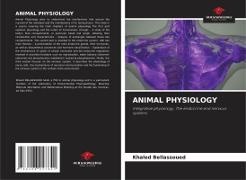Read more
Animal Physiology aims to understand the mechanisms that ensure the survival of the individual and the maintenance of its homeostasis. This book is a course covering the main chapters of animal physiology. The first part explores physiology and the notion of homeostasis through: - A study of the body's fluid compartments, in particular blood and lymph, detailing their composition and characteristics. - Analysis of exchanges between these two compartments. The second part is devoted to the endocrine system, with two main themes: - A presentation of the main endocrine glands, their hormones, as well as biosynthesis processes and hormone classification. - Explanation of the mechanisms of action of certain hormones and the endocrine regulations involved in essential functions such as reproduction, water balance (volcemia-natremia) and phosphocalcic metabolism (calcemia-phosphatemia). Finally, the third section focuses on the nervous system. It describes the physiology of nerve cells, the mechanisms of neuronal communication and the functioning of the nervous system in the context of the environment.
About the author
Khaled BELLASSOUED holds a PhD in animal physiology and is a permanent member of the Laboratory of Environmental Physiopathology, Bioactive Molecule Valorization and Mathematical Modeling at the Faculté des Sciences de Sfax (FSS).

